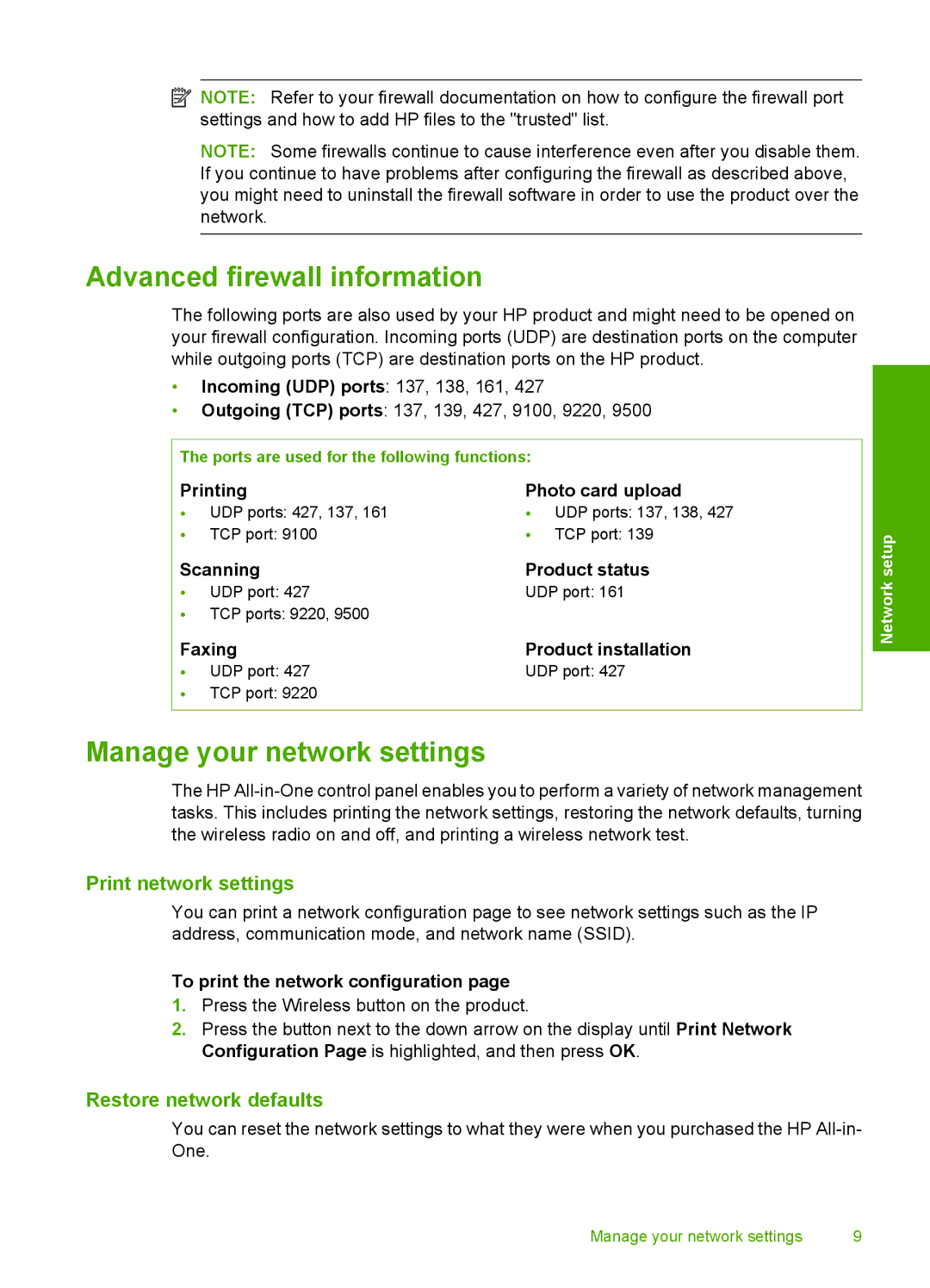
![]() NOTE: Refer to your firewall documentation on how to configure the firewall port settings and how to add HP files to the "trusted" list.
NOTE: Refer to your firewall documentation on how to configure the firewall port settings and how to add HP files to the "trusted" list.
NOTE: Some firewalls continue to cause interference even after you disable them. If you continue to have problems after configuring the firewall as described above, you might need to uninstall the firewall software in order to use the product over the network.
Advanced firewall information
The following ports are also used by your HP product and might need to be opened on your firewall configuration. Incoming ports (UDP) are destination ports on the computer while outgoing ports (TCP) are destination ports on the HP product.
•Incoming (UDP) ports: 137, 138, 161, 427
•Outgoing (TCP) ports: 137, 139, 427, 9100, 9220, 9500
The ports are used for the following functions:
Printing | Photo card upload | ||
• UDP ports: 427, 137, 161 | • | UDP ports: 137, 138, 427 | |
• | TCP port: 9100 | • | TCP port: 139 |
Scanning | Product status | ||
• | UDP port: 427 | UDP port: 161 | |
•TCP ports: 9220, 9500
Faxing | Product installation |
• UDP port: 427 | UDP port: 427 |
•TCP port: 9220
Network setup
Manage your network settings
The HP
Print network settings
You can print a network configuration page to see network settings such as the IP address, communication mode, and network name (SSID).
To print the network configuration page
1.Press the Wireless button on the product.
2.Press the button next to the down arrow on the display until Print Network Configuration Page is highlighted, and then press OK.
Restore network defaults
You can reset the network settings to what they were when you purchased the HP
Manage your network settings | 9 |
